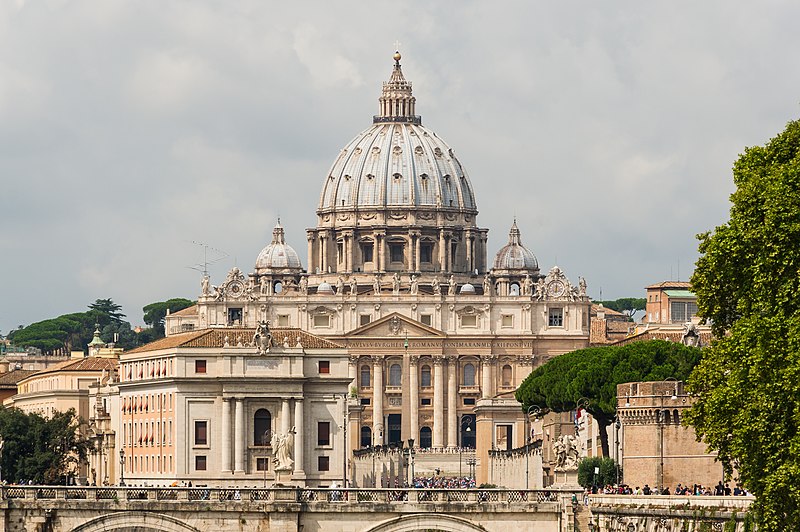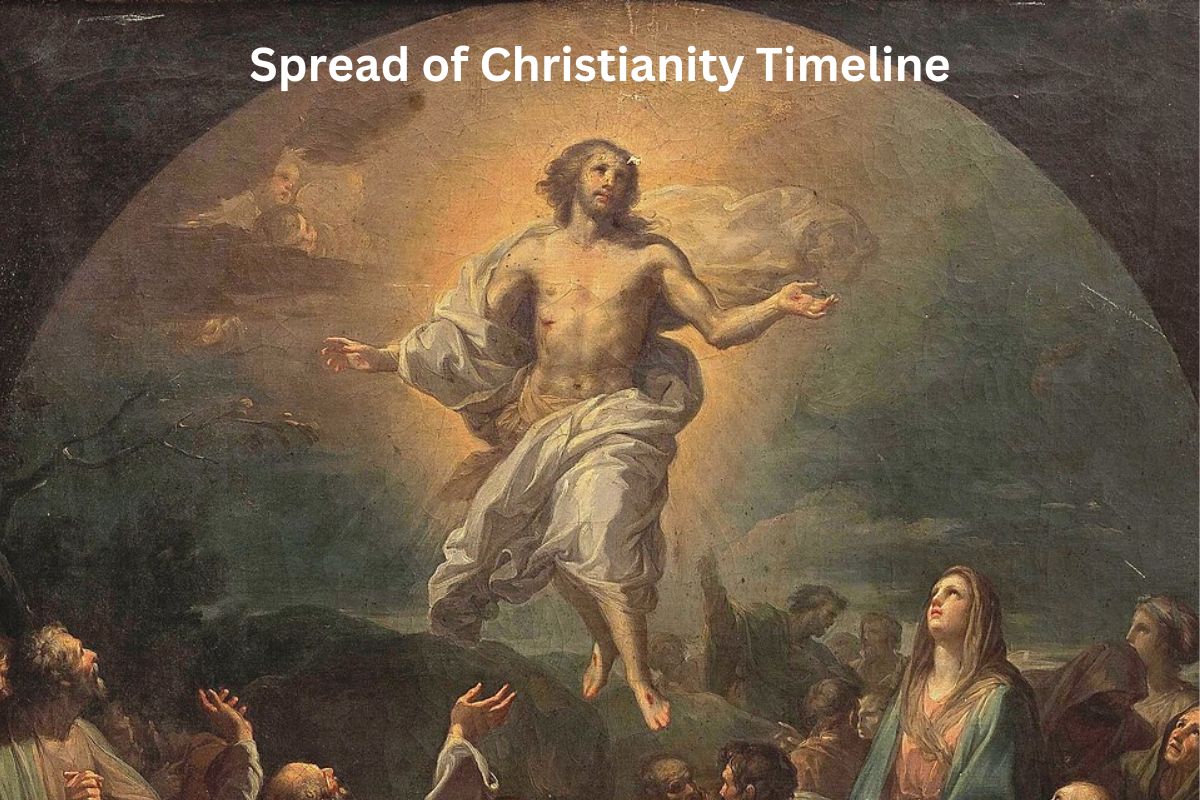The spread of Christianity is a rich historical journey spanning over two millennia.
Originating in the 1st century AD with Jesus Christ’s teachings, it has grown into one of the world’s largest religions.
This overview will highlight key moments in its expansion, from early Christian communities in the Roman Empire to its global presence today.
Explore the influence of Christianity through theological developments, missionary efforts, and its impact on diverse cultures.
| Century | Key Events in the Spread of Christianity |
|---|---|
| 1st Century AD | c. 30-33 AD: Crucifixion of Jesus Christ. c. 33 AD: Resurrection of Jesus. c. 33-70 AD: Early Christian communities form in Jerusalem and other parts of the Roman Empire. |
| 1st-3rd Century AD | 1st century: Christian communities established in various cities of the Roman Empire, including Antioch, Alexandria, and Rome. 64 AD: The Great Fire of Rome leads to the persecution of Christians by Emperor Nero. 313 AD: Edict of Milan issued by Emperor Constantine and Licinius, granting religious tolerance to Christianity. |
| 4th Century AD | 325 AD: First Council of Nicaea, which establishes core Christian doctrines. 380 AD: Christianity becomes the official state religion of the Roman Empire under Emperor Theodosius I. |
| 5th-7th Century AD | 5th century: Christianity spreads to the British Isles through missionaries like St. Patrick. 6th century: Christianity spreads to Ireland and Scotland. 7th century: Christianity reaches parts of Scandinavia. |
| 8th-10th Century AD | 8th century: Christianization of the Frankish Empire (Charlemagne). 9th-10th centuries: Christianization of Eastern Europe, including the conversion of the Kievan Rus’ in modern-day Ukraine and Russia. |
| 11th-15th Century AD | 11th century: The Great Schism of 1054 leads to the split between the Eastern Orthodox Church and the Roman Catholic Church. 12th-13th centuries: Christian Crusades in the Holy Land and the spread of Christianity to some parts of the Middle East. 15th century: The Age of Exploration leads to the spread of Christianity to the Americas, Africa, and Asia through European colonization. |
| 16th-18th Century AD | 16th century: The Protestant Reformation begins in Europe, leading to the emergence of various Protestant denominations. 17th-18th centuries: Christian missionaries, especially from European countries, spread Christianity to various parts of the world, including India, China, and Africa. |
| 19th-20th Century AD | 19th century: Christian missionary work continues in Africa and Asia, often accompanied by European colonial expansion. 20th century: The spread of Christianity to new regions accelerates, with significant growth in Africa and South America. |
| 21st Century AD | Christianity continues to be a global religion, with a diverse and widespread presence in all continents. |
Timeline of the Spread of Christianity
1st Century AD:
c. 30-33 AD: Crucifixion of Jesus Christ:
The central figure of Christianity, Jesus Christ, was crucified in Jerusalem, which is now part of modern-day Israel.
Also Read: End of Times Bible Timeline
His crucifixion is a pivotal event in Christian theology and serves as the basis for Christian beliefs in redemption and salvation through Jesus.

c. 33 AD: Resurrection of Jesus:
According to Christian beliefs, Jesus was resurrected three days after his crucifixion. This event is celebrated as Easter and is considered a foundational element of Christian faith, signifying victory over death and sin.
c. 33-70 AD: Early Christian communities form in Jerusalem and other parts of the Roman Empire:
Following the resurrection of Jesus, his disciples and followers began forming early Christian communities in Jerusalem and other regions of the Roman Empire.
These communities practiced a form of Judaism but also believed in the divinity of Jesus as the Messiah.
1st-3rd Century AD:
1st century: Christian communities established in various cities of the Roman Empire:
As Christianity spread, communities of believers emerged in cities such as Antioch, Alexandria, and Rome. These early Christians faced challenges and occasional persecution due to their religious beliefs.
64 AD: The Great Fire of Rome leads to the persecution of Christians by Emperor Nero:
In 64 AD, a fire broke out in Rome, and Emperor Nero blamed Christians for the disaster.
Also Read: Facts Based on Science Found in the Bible
This marked the beginning of official persecution against Christians in the Roman Empire, including the execution of some early Christian leaders.
313 AD: Edict of Milan issued by Emperor Constantine and Licinius:
The Edict of Milan, issued by Roman Emperors Constantine and Licinius, was a landmark decree that granted religious tolerance to Christianity within the Roman Empire. This edict marked a significant turning point, as it allowed Christians to practice their faith openly without fear of persecution.

4th Century AD:
325 AD: First Council of Nicaea:
The First Council of Nicaea, convened by Emperor Constantine in 325 AD, was a pivotal event in Christian history. It aimed to address theological disputes within the Christian community, particularly the Arian controversy concerning the nature of Christ.
The council resulted in the Nicene Creed, which articulated key Christian doctrines, including the divinity of Jesus Christ. This creed remains central to Christian theology today.
380 AD: Christianity becomes the official state religion of the Roman Empire:
Under the reign of Emperor Theodosius I, Christianity was declared the official state religion of the Roman Empire in 380 AD. This marked a significant shift in the status of Christianity from a persecuted faith to the dominant religious and cultural force in the empire.
5th-7th Century AD:
5th century: Christianity spreads to the British Isles:
During the 5th century, Christian missionaries, including St. Patrick, played a crucial role in spreading Christianity to the British Isles. St. Patrick, in particular, is credited with converting Ireland to Christianity.
6th century: Christianity spreads to Ireland and Scotland:
The work of St. Patrick in Ireland and other missionaries in Scotland led to the Christianization of these regions. Monastic communities were established, which became centers of learning and Christian culture.
7th century: Christianity reaches parts of Scandinavia:
In the 7th century, Christian missionaries began their work in parts of Scandinavia, particularly among the Vikings. The process of Christianization in Scandinavia was gradual and often intertwined with political developments and trade relations.

8th-10th Century AD:
8th century: Christianization of the Frankish Empire (Charlemagne):
Charlemagne, also known as Charles the Great, played a significant role in the Christianization of the Frankish Empire (which covered parts of modern-day France, Germany, and surrounding areas). He supported the Church and expanded its influence in his realm, leading to the spread of Christianity.
9th-10th centuries: Christianization of Eastern Europe:
During this period, Eastern Europe saw the Christianization of various regions. The most notable event was the conversion of the Kievan Rus’ in the 9th and 10th centuries.
Prince Vladimir the Great of Kiev adopted Christianity in 988, making it the state religion of the Kievan Rus’ and paving the way for the spread of Orthodoxy in Eastern Europe.
11th-15th Century AD:
11th century: The Great Schism of 1054:
The Great Schism of 1054 marked a significant split in Christianity, resulting in the separation of the Eastern Orthodox Church and the Roman Catholic Church. Differences in theology, practice, and ecclesiastical authority led to this division.
12th-13th centuries: Christian Crusades:
A series of Christian Crusades were launched in the Holy Land during the 12th and 13th centuries. While the primary goal was to secure Christian access to holy sites, the Crusades also led to the spread of Christianity in some parts of the Middle East.
15th century: The Age of Exploration:
The Age of Exploration, beginning in the late 15th century, marked a period of significant geographical expansion for Christianity. European explorers and missionaries traveled to the Americas, Africa, and Asia, spreading Christianity through colonization and missionary work.

16th-18th Century AD:
16th century: The Protestant Reformation:
The 16th-century Protestant Reformation, initiated by figures like Martin Luther and John Calvin, led to the emergence of various Protestant denominations. It challenged the authority of the Roman Catholic Church and resulted in the spread of Protestantism throughout Europe and later to other continents.
17th-18th centuries: Christian missionaries:
During the 17th and 18th centuries, Christian missionaries from various European countries embarked on missions to various parts of the world. They played crucial roles in spreading Christianity to regions such as India, China, and Africa, often accompanying European colonial expansion.
19th-20th Century AD:
19th century: Christian missionary work in Africa and Asia:
Christian missionary efforts continued in the 19th century, particularly in Africa and Asia. Missionaries established schools, hospitals, and churches, contributing to the growth of Christianity in these regions.
20th century: Global expansion of Christianity:
The 20th century witnessed significant growth in Christianity worldwide. It became a truly global religion, with large Christian populations in Africa, South America, and Asia. It also saw the rise of new Christian movements and denominations.
21st Century AD:
Continued global presence:
In the 21st century, Christianity remains a global religion, with millions of adherents on every continent. It continues to adapt to changing cultural and social contexts and plays a significant role in various aspects of contemporary society, including politics, education, and humanitarian work.
Throughout these centuries, Christianity has undergone diverse developments, denominational splits, and adaptations to different cultures. Its spread has been influenced by factors such as political power, exploration, missionary work, and social changes, making it one of the world’s most widely practiced religions.
